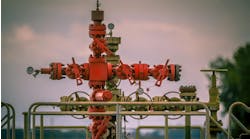The operator was frantic as he choked down hot acid fumes. He had sat through a stern lecture on the need for a gas mask but apparently thought "Real men don't need 'em." In desperation he grabbed for others' masks; my crew was split between rescuing him and slamming the boom back into the roaster.
My operator learned a hard lesson; he was lucky. Some chemicals are less noxious and even more deadly. Let's consider how you should approach a confined space entry job the next time one comes up.
First, understand what constitutes a confined space. Worldwide standards uniformly agree that it: 1) is totally or partially enclosed; 2) isn't normally occupied; 3) has limited egress; and 4) could contain a hazard. And that's the rub. Assessing the actual risk is a challenge. Another dilemma is defining a space where one or more walls are open. Generally, this is best left to continuous measurement: if oxygen level is below 19.5% or above 23.5%, or a hazardous chemical is ever present, it's a confined space. Some people say to ignore a periodic danger but I disagree. In much of the world plants are required to compile a confined space registry that includes: the danger, with material safety data sheet (MSDS) references; the personal protection gear (PPG) required; and a rescue plan. This registry usually is available to the local fire marshal.
Now, let's consider what documents you'll need before conducting confined space work: 1) the PPG list; 2) a roster of equipment needed for the work; 3) the MSDSs; 4) a detailed list of monitoring equipment along with their calibration requirements; 5) an escape plan; 6) the location of emergency equipment and vehicles and their entry plan; 7) lighting requirements; 8) shift rotation plans and break schedules; 9) a liaison blueprint for keeping operations and others informed; 10) a communication plan — with multiple alternatives; and 11) the Permit to Work (PTW) and the preceding Job Safety Analysis (JSA), hot work permits, etc. Obviously, permits will take days, maybe weeks, to complete the first time.
With a green light on the permit, you'll want to schedule the work with production. By the time the work is ready to begin things may have changed. So, walk down the confined space area to ensure there're no conflicts with other work or production. Then you're ready to start.
Two people — the sentry and work leader — must be chosen carefully for any confined space work. Of the two, the sentry must be the most experienced. You need someone with the wisdom to realize safety comes from teamwork not an individual act of heroism, and who can watch others work without becoming bored or distracted. I am reminded of the death of the contract foreman in the nitrogen asphyxiation accident at Valero's Delaware plant in November 2005. Don't go into a confined space without proper PPG! To be effective, a sentry must: 1) be aware of the area, equipment and other work going on; 2) know how to use rescue equipment, including harnesses and lifts, as well as environment monitors and be physically able to operate the lift; 3) know directions to the site for emergency responders; 4) have spare radios and batteries; 5) understand the work being done; and 6) be a stickler for procedures. This final point is crucial because the sentry should inspect PPG for each person entering the space — usually wearing a harness is mandatory — and test all work equipment and communications gear prior to space entry and in the space before work begins. Once work is underway the sentry's job settles into recordkeeping — who enters and leaves the space and the environmental conditions in the space. Under no circumstance should the sentry enter the space, including breaking the plane isolating it. In some cases, this plane extends outward from the entry. The job foreman is in charge of safety in the hole; the sentry is in charge of work outside and the job itself.
Now, let's consider some special circumstances. Where heat stroke is a possibility, keep ice available and exposure times short. This means rotating people. If fire is a possibility, a fire blanket works best because flue gases, including steam, resulting from a fire could cause asphyxiation. Air tools are better than electric ones but make sure they're driven by breathable air, not nitrogen. Protect ears in confined spaces where sound dissipation isn't possible.
As chemical engineers, it is our responsibility, as the best educated and most knowledgeable people in a chemical facility or refinery, to look after others. Let's do our duty.
Dirk Willard is a Chemical Processing Contributing Editor. You can e-mail him at [email protected].


